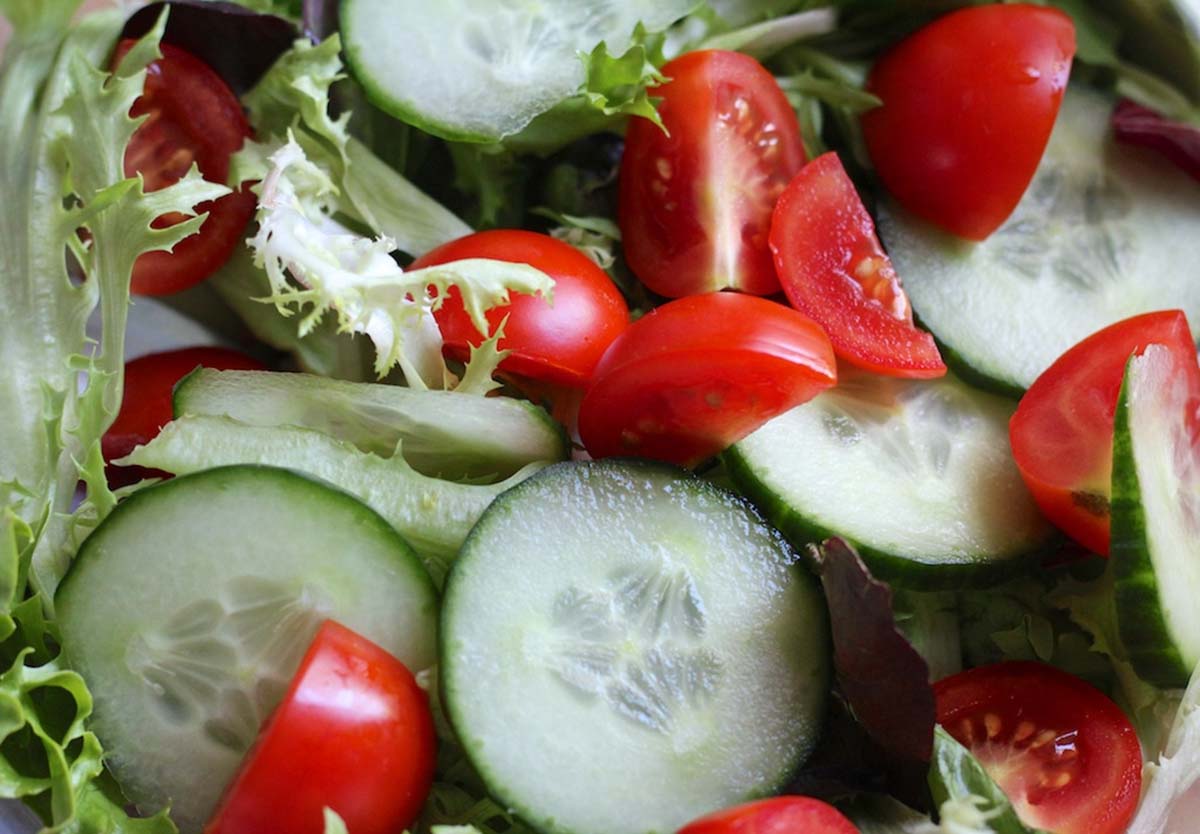Table of Contents
Eat your greens is probably the best piece of nutrition advice you could ever follow. Salads are a great way to u our leafy green intake and ensure that we eat a vast array of raw vegetables. It is easy to fall into a boredom trap with salads, but a little bit of creativity can go a long way! The more colour and variety you add to salads, the more nutrition and taste too. It’s just about knowing what ingredients to buy and how to put them together. Here is a nice guide to get you started.

Salad Essentials
For the base use the Greens.
Studies have shown a negative association between green vegetable intake and cancers of the prostate, lung, breast and cervix. Chlorophyll, in green plants, helps oxygenate the blood and improve energy. Another phytochemical, glucosinolate, which imparts a bitter taste to green vegetables, is a powerful liver detoxifier. Green vegetables are also loaded with folate, minerals and fibre.
Not all salads need to contain greens, but they do form a good base and depending on your choices will provide the most in terms of micronutrient nutrition. Ditch the boring iceberg lettuce and start to experiment with other greens. Add them whole, chop them up or look for the baby green varieties. Some of the best salad greens include:
Arugula. Also known as rocket has a sharp, peppery flavour and is loaded with calcium and iron.
Butterhead lettuce. This small lettuce has a sweet and mild flavor and a good amount of folate. They also tend not to cause bloating for people who are sensitive to greens.
Frisée. Also called curly endive, frisée has a mildly bitter flavor
Kale. This hardy cabbage is amongst the world’s most nutritious foods.
Lollo rosso. This heavily ruffled red-leaf lettuce is mildly flavoured and contains special antioxidants only found in red coloured foods.
Mâche. This is a more hardy blue-green leaves that provides nutty flavor and a chewy texture
Mizuna. Cultivated in Japan, these bright-green leaves have a mild mustardlike flavor.
Romaine. Although its one of the more common lettuces, Romaine is also among the most nutritious. With high levels of vitamin C, folate and iron.
Spinach. This versatile veggie adds a slightly bitter flavor to salads and is also delicious in its baby variety.
Watercress. Watercress, like arugula is known for its peppery flavor and is delicious in salads
Basic Salad Additions
Tomatoes
Tomatoes are a great addition to most salads and provide colour, flavor and nutrition. They are rich in a chemical called lycopene found in red vegetables and fruits. They are also a great source of vitamin C.
Cucumbers
This humble vegetable has very high water content and is particularly good for the skin and the colon. Include the skin for maximum nutrition.
Onions
Red and white onions provide a great kick to any salad and are also particularly healthy.
Onions are also a reasonable source of magnesium, chromium, vitamin B6, foliate, and potassium. Onions are also high in special sulphur-containing compounds similar to the ones found in garlic, which are responsible for most of their health effects.
See Also: How To Sneak Veggies Into Your Diet
Carrots
Carrots add some crunch and colour to salads and are great chopped or grated. They are a good source of beta-carotene, a powerful antioxidant.
- Photo courtesy of kate hiscock by Flickr: www.flickr.com/photos/slightlyeverything/7685364860
- Photo courtesy of Plat by Flickr: www.flickr.com/photos/21993940@N00/3435951126


Your thoughts on this